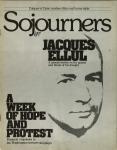The decision to make the long and hazardous 60-kilometer journey to Vientiane had been delayed for three days. Finally the father and mother realized that their 8-year-old son would not recover without help. They weren’t sure what he was suffering from, but it really didn’t matter. So many people in their village had the same symptoms and there were no medicines to help anyone. It took all day in the back of a truck and almost all the money they had saved to get to the general hospital in the capital. They were hopeful that now the doctors could help them. But it was too late. Their son died that night of cerebral malaria.
The war in Laos continues, but the battlefields have changed. The people of Laos are fighting a new war against sickness and hunger. Guns have been discarded for ploughs and medical kits. But the battle to wipe out disease and reclaim abandoned fields will be difficult.
Public health officials describe malaria as the “number one health problem” in Laos. Recent World Health Organization (WHO) surveys in two provinces of Laos indicate that one in three persons suffers from active malaria. Seventy-five percent of the cases are falciparum, the most difficult strain of malaria to treat.
During the war, American aid provided DDT for spraying areas under the control of the Vientiane government. With the collapse of this regime in 1975, all U.S. assistance was cut off and sprayings had to be suspended, causing a sharp increase in the incidence of malaria. This year WHO has provided ten tons of DDT, about 12% of the total need, for spraying mosquitos in the most infected areas. Ecologists are reluctant to use DDT; for Laos it is a life or death choice. WHO officials consider DDT to be the cheapest and safest protection against malaria-carriers.
With the destruction of many hospitals and dispensaries in the countryside and the depletion of medical supplies during the two decades of war, disease in Laos today is widespread. In the village of Ban Done, 130 kilometers north of Vientiane, 20% of the 3,200 villagers are seriously ill with dysentery, intestinal parasites, infections, and malaria.
“How many children did you have?” we asked the mother of a friend recently as she sat weaving cloth under her house. “Oh, many. I don’t remember.” Then, sadly, she continued, “There are five living, but many have died.” WHO estimates the infant mortality in Laos at about 123 per thousand, one of the highest rates in the world. In the next five years, 240,000 out of 850,000 infants will die before their first birthday.
The primary cause of mortality among Lao children is gastroenteritis resulting in acute diarrhea. Most cases of the disease are caused by the lack of basic hygiene and sanitation in many rural Lao villages: water is usually not boiled before drinking, wells and latrines are uncommon, and animals are often kept under houses, causing the breeding of germs and germ-carrying insects.
Recognizing the importance of public health education and preventative medicine in disease control, realizing that most foreign aid in the past benefited primarily the small urban population, and facing serious transportation difficulties over its rugged terrain, the new Lao government is now seeking to develop a decentralized rural health network. Many villages even near the capital have built dispensaries and received health workers for the first time after the war, but medical facilities face a desperate shortage of equipment and supplies. In a recent visit to the new 30-bed hospital in Vieng Sai in northeastern Laos, foreign diplomats found only two shelves of medicine in a small cupboard to serve a district of 4,000 people.
The 265,000 refugees who returned to their native villages since the end of the hostilities face other serious hardships. Many of the nearly three million tons of bombs dropped on Laos by American planes during the war have yet to explode. In Muang Pek (Plain of Jars), a sub-district in Xieng Khouang province with a population of 3,050 people, 15 farmers were killed and five injured by unexploded bombs while reclaiming their fields last year.
Before the war, Xieng Khouang province had 83,000 water buffalo. When the bombing finally stopped, only 250 draught animals had survived. Today the province total has increased to 2,100 buffalo for a population of 95,000 people. Because of the lack of serious pulling power, groups of eight men harness themselves behind buffalo plows. As a result of the difficulties in reclaiming their fields, most resettled refugees only harvested a two-month supply of rice last year.
Exacerbating the difficulties of postwar recovery, Laos faced a rice harvest disaster in 1976. Northern areas were plagued with locusts. Central and southern paddy fields suffered drought during the planting season and then were inundated with floods shortly before harvest. The result is a rice shortage this year of 120,000 tons, 20% of Laos’ total food requirement.
In an attempt to avoid this problem in the future, massive water control systems are being built throughout the country. During the first two weekends of April, 20,000 volunteers from Vientlane dug 14 kilometers of waterways and irrigation canals around the capital city. This spring Vientiane was turned into a giant vegetable garden as every available plot of land was cultivated to increase food production.
The new war which the people of Laos are fighting can be won, but not without time, education and financial help. Assistance through bilateral and multilateral channels has been significant in supplying food and medicines to avert disaster. United Nations agencies have worked closely with the Lao government in developing projects to provide hospitals, medicines, and equipment for agricultural development, but funds for many of these projects are not yet available.
Although the U.S. government spent billions of dollars financing twenty years of warfare, it has yet to help pay the cost of peace. As a result, relations between the governments of Laos and the U.S. have been seriously strained during the past two years. But as they told President Carter’s Commission during its visit in March, the new Lao authorities are ready to forget the past. Gestures of American assistance could go a long way toward restoring goodwill between our two countries and supporting the battle of the Lao people against disease and hunger.
Linda and Murray Hiebert have been with Mennonite Volunteer Service in Indochina for several years, and are now living in Vientiane, Laos. Their article, “Lamentations from Thailand,” appeared in the March 1977 issue of Sojourners.

